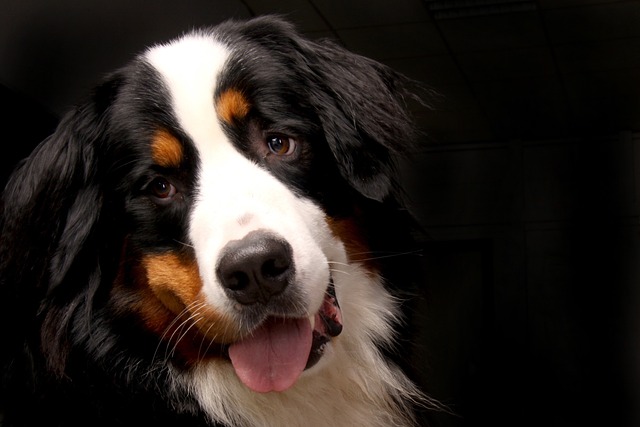
How can I tell if my dog's heatstroke is serious
Let’s be real: It’s a sticky August morning in Los Angeles, and you took your 2-year-old Golden Retriever, Max, for a walk a little later than usual
The first stretch of a dog’s morning—paws kneading the bed, tail thumping as they nudge your hand—feels like a gift. But keeping that joy steady depends on daily care that goes beyond cuddles. It’s the small, consistent acts that keep them healthy, happy, and in step with the rules that make communities safe for everyone, from Stockholm to Seattle.
Start with what goes in their bowl. A steady routine of quality food—measured portions at set times—keeps their digestion on track. Skip the table scraps, not just because they can upset tummies, but because in places like Germany, feeding dogs certain foods (like onions or chocolate) violates animal welfare laws, carrying fines. Fresh water, changed twice a day, is non-negotiable; a dry bowl isn’t just uncomfortable, it’s a red flag for inspectors in regions like Ontario, where proper hydration is part of responsible ownership. Watch their appetite too—sudden disinterest might mean a vet visit is needed, which ties to laws in the UK requiring owners to address health issues promptly.
Movement matters as much as meals. Even couch-loving breeds need daily walks—how much depends on their size and energy, but 30 minutes to an hour split into two trips works for most. In London, owners who skip walks can face penalties if a dog’s pent-up energy leads to nuisance behavior, like excessive barking. It’s not just about compliance; a stroll around the block lets them sniff, socialize, and burn off steam, which keeps their minds sharp. A terrier in Barcelona I met thrives on morning jaunts to the park, where he greets neighbors—his owner swears it’s why he’s never chewed a shoe.
 Grooming is more than looking good. Brushing a retriever’s coat daily keeps tangles at bay and lets you check for ticks, especially in wooded areas of Vermont or Austria, where Lyme disease is a risk. Wipe floppy ears with a damp cloth to prevent infections, and trim nails every couple of weeks—long claws can curl into paws, causing pain that might make them snappy, which could run afoul of anti-aggression rules in parts of France. Even dental care counts: a quick brush with dog-safe paste a few times a week wards off decay, saving vet bills and keeping their chompers ready for treats.
Grooming is more than looking good. Brushing a retriever’s coat daily keeps tangles at bay and lets you check for ticks, especially in wooded areas of Vermont or Austria, where Lyme disease is a risk. Wipe floppy ears with a damp cloth to prevent infections, and trim nails every couple of weeks—long claws can curl into paws, causing pain that might make them snappy, which could run afoul of anti-aggression rules in parts of France. Even dental care counts: a quick brush with dog-safe paste a few times a week wards off decay, saving vet bills and keeping their chompers ready for treats.
A little observation goes a long way. Take 60 seconds each night to run your hands over their body—feel for lumps, check if their belly is tight, notice if they limp when they stand. These small checks catch issues early, which aligns with laws across Europe and North America that mandate prompt care for sick or injured pets. A spaniel in Portland was diagnosed with a minor infection last year because his owner noticed he was licking his paw raw during their evening snuggle—quick treatment kept it from spreading.
Dogs thrive on routine, and so do communities. When you stick to these daily steps, you’re not just caring for your pet—you’re being a good neighbor. They’ll greet the world with brighter eyes, wagging tails, and the confidence that comes from feeling their best. And in the end, that’s the point: a well-cared-for dog is a joy to be around, for both of you.

Let’s be real: It’s a sticky August morning in Los Angeles, and you took your 2-year-old Golden Retriever, Max, for a walk a little later than usual

You're enjoying a summer afternoon at the park when you notice your dog has stopped panting and appears disoriented - their gums are bright red

Let’s paint the picture: You’re in your Denver apartment, watching your 4-year-old Boston Terrier, Ruby, plop down mid-play session with her favorite toy

Many dog owners notice their pets nails seem shorter after regular walks,but how much does this daily activity actually help?The answer depends on where you walk—concrete sidewalks or asphalt streets gently file nails as a dog's paws hit the ground

Most dog owners notice their pup scooting across the carpet at some point, but few connect it to impacted anal glands. These small sacs near a dog’s rectum secrete a scent for marking territory

Most vets agree that regular dog teeth cleaning is key to avoiding painful dental issues later. For healthy adult dogs, a professional cleaning at the vet’s office every 12 to 18 months usually works well.